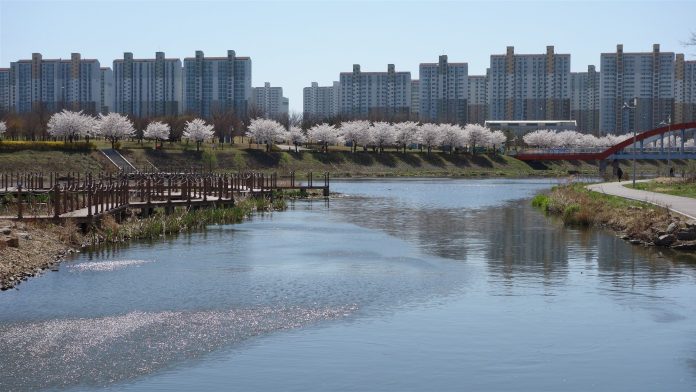Namyangju has a population of 650,000 and is located 25 kilometers northeast of Seoul in the Republic of Korea. City leaders have been continuously promoting smart city project since 2008.
This Asian city has recently experienced rapid population growth followed by large-scale housing development to keep up with the influx of residents. As a proactive response to new demands in public transport and public safety, the city adopted a rapid action plan to implement a number of smart city initiatives with a focus on the implementation of intelligent transport system and crime prevention systems.
Namyangju’s intelligent traffic system (ITS) is establishing a basis for future transportation that can provide ubiquitous services customized for residents. It is an advanced, green traffic system that can improve traffic efficiency, and safety in general, by using innovative technologies not only to automate operation and control of the traffic system, but also to collect, process and provide various traffic-related data points.
Namyangju’s ITS collects and processes real-time running information via RSE (Road Side Equipments) installed on the city’s main roads and also provides real-time traffic information via car terminals, variable message signs (VMS), and internet connectivity.
By using smartphones, users can access real-time information about traffic conditions, unexpected situation, CCTV footage and dyanamic bus routes.
Namyangju is also running a crime prevention service by utilizing electronic communication facilities installed at bus stops. Crime prevention alarms and CCTVs are installed at 99 bus platforms. In case of crime or emergencies, these facilities connect with the crime prevention center.
Additionally, the S.Net service allows for guardians to manage urgent emergencies regarding those under their custody (elderly, children, disabled). The smartphone user’s location information is used to notify the guardian with emergency alarms, provide bus arrival information, and notify when those under guard have left the safety zones.
Namyangju’s smart city program also includes initiatives meant to drive citizen interaction. The city is running a civil complaint processing system, which is managed and operated based on location information and is connected to the traffic CCTV system. The system identifies and processes civil complaints in real time. The city is also operating a smartphone application that can process complaints and notify citizens with traffic information, events information, and road construction information. The application recognizes the NFC, QR codes that are installed in approximately 2,300 sites all across the city and provides people with the relevant traffic and administrative information.

